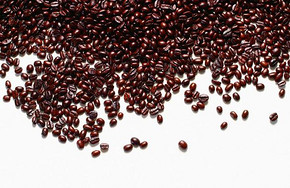Distribution of main producing areas of Dominican Coffee
Follow the caf é (Wechat official account vdailycom) and found that Beautiful Cafe opened a small shop of its own.
To trace the origin of Tibica, we should first talk about the coffee trees originally planted in Martinique. These trees were planted by Dominicans as far back as the early 18th century, so Dominica began growing coffee as early as that time. For a time, the Caribbean was almost synonymous with coffee production, but in recent years Cuba, Haiti and other places have been severely damaged by Hurricane George, and later planted Kaddura species with lower numbers and higher harvests.
Dominica coffee is mainly produced in areas such as Cibao in the Central Mountains, the Caribbean and Barahona. There are many large estates in Siwao, and coffee trees are planted with 75% Kaddura and 25% Tibica. In terms of varieties, Baraona is an area with a high proportion of Tibika seeds.
Located in the Jarabacoa region near Siwao, it has the largest farm in Dominica-Ramirez Manor (RamirezEstates), which mainly grows Kaddura varieties, and most of the coffee produced is sold to Europe, the United States and other western countries and regions. Ramirez Manor itself produces coffee in an environmentally friendly way.
Coffee in Dominica is graded in sizes such as AA and AB, but it is classified as top grade by coffee from highlands such as Sivao and Baraona. Both kinds of coffee are harvested from February to May and are refined by washing.
Interestingly, Dominica's coffee production has not changed much since the late 1970s, but the amount of coffee exported has fallen sharply, and only about 20% of coffee is now exported. This is due to the increase in domestic demand for coffee, which is about 3kg per person per year, and consumption exceeds that of the UK. In 2007, half of foreign sales went through Puerto Rico, a gateway to the United States, while the rest went to Europe and Japan.

Since 2001, more and more exported coffee has been organically cultivated and certified, greatly increasing the value and profits of the industry. It is worth mentioning that although organic farming is basically good, it does not mean that the cup test quality of this kind of coffee is better.
Some people believe that the high domestic consumption in Dominica has led to the overall poor quality of coffee because there are no external competitors to compete with it. In spite of this, there is still a lot of high-quality coffee in China.
Production and marketing resume
Although there are many coffee with traceability in China, you can usually find specific coffee gardens, but most exported coffee can only be traced back to the producing areas at most. Most of these coffees are graded according to the particle size of beans and use names such as "Supremo". They may be of slightly better quality, but have nothing to do with the quality of the cup.
Coffee taste
Typical island coffee tastes, those of better quality are usually mild and pure, with low to moderate acidity.
Producing area
Population: 9445000
2013 production (60 kg / bag): 450000 bags
The climate of Dominica is different from that of many coffee-producing countries. There is no clear seasonal difference in terms of temperature or rainfall. This means that coffee can be produced almost all year round, but the main season is usually from November to May.
Important Notice :
前街咖啡 FrontStreet Coffee has moved to new addredd:
FrontStreet Coffee Address: 315,Donghua East Road,GuangZhou
Tel:020 38364473
- Prev

A symbol of high quality: Dominica washes coffee beans
Following Cafe (Wechat official account vdailycom) found that Beautiful Cafe opened a small shop of its own the Dominican Republic is located in the east of the Central Haitian Island in the West Indies, the Republic of Haiti is bordered by the Republic of Haiti to the west, the Atlantic Ocean to the north and the Caribbean Sea to the south. With an area of about 49000 square kilometers and a population of 7.1 million, the Dominican Republic and the Republic of Haiti coexist on an island bordering Haiti.
- Next

Dominica's Santo Domingo Coffee varieties and characteristics
Following Ka Pin (Wechat official account vdailycom) found that Kind Cafe opened a small shop of its own species Kind Cafe the growing number of species was hit hard by the hurricane in 1998, resulting in countless losses everywhere, so the local people generally began to switch to Kaddura species with lower height and higher harvest. Although Baraona still has Tibica coffee, he suffers from hurricanes every year.
Related
- Detailed explanation of Jadeite planting Land in Panamanian Jadeite Manor introduction to the grading system of Jadeite competitive bidding, Red bid, Green bid and Rose Summer
- Story of Coffee planting in Brenka region of Costa Rica Stonehenge Manor anaerobic heavy honey treatment of flavor mouth
- What's on the barrel of Blue Mountain Coffee beans?
- Can American coffee also pull flowers? How to use hot American style to pull out a good-looking pattern?
- Can you make a cold extract with coffee beans? What is the right proportion for cold-extracted coffee formula?
- Indonesian PWN Gold Mandrine Coffee Origin Features Flavor How to Chong? Mandolin coffee is American.
- A brief introduction to the flavor characteristics of Brazilian yellow bourbon coffee beans
- What is the effect of different water quality on the flavor of cold-extracted coffee? What kind of water is best for brewing coffee?
- Why do you think of Rose Summer whenever you mention Panamanian coffee?
- Introduction to the characteristics of authentic blue mountain coffee bean producing areas? What is the CIB Coffee Authority in Jamaica?

